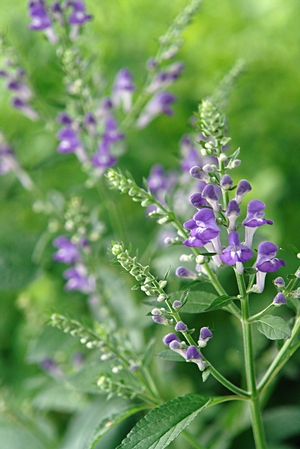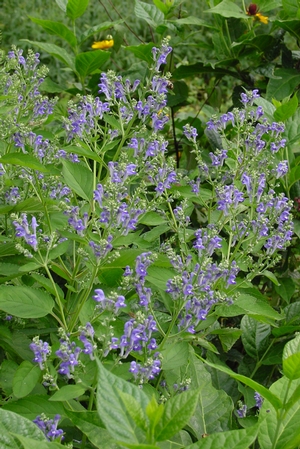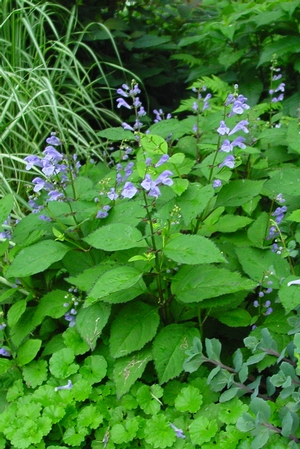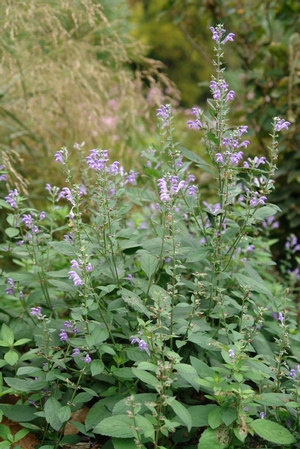Scutellaria incana
Common: hoary skullcapScutellaria incana LP50 - 50 per flat
- Height: 2'-4'
- Spread: 12"-16"
- Spacing: 12"
- Hardiness Zone(s): 4-9


Scutellaria incana LP50 - 50 per flat



Easily grown in average, well-drained soil in full sun to part shade. Best on dryish, sandy or clay soils. Great for wildflower gardens, cottage gardens, native plant gardens, open woodland areas, prairies or meadows. - Missouri Botanical Garden
Scutellaria incana is an eastern meadow native that provides weeks of color in mid-summer with purple-blue flowers sitting top bushy green plants. Growing 2-3’ tall and 1-2’ wide, hoary skullcap is a member of the mint family with square stems and downy, serrate foliage. Unlike its cousins, it does not have scent and is inedible to mammals but it is an easy-to-grow plant rarely afflicted with disease and tough as nails after it establishes in the garden.
Scutellaria incana is found at woods edges, thickets, rocky slopes above rivers and in sunny meadows from New York to Arkansas. It can take a wide range of soil conditions, from sandy to rocky, but is especially notable in its way of managing heavy clay. It spreads by strong rhizome and will form a dense clump when placed in moist, rich soil. Hoary skullcap prefers full sun but can tolerate light shade. As with most plants, less light results in a more sporadic and shorter bloom display.
Hoary skullcap has stronger spires of blooms than Agastache foeniculum but doesn’t quite have the same name recognition. Great for naturalized settings like meadows and prairie restorations, skullcap looks just as well in the sunny pollinator garden or perennial border. We particularly enjoy its drought tolerance. As with most members of the mint family, Scutellaria incana is attractive to pollinators including bumblebees, skippers, and bee flies while the foliage is also used as forage for several sucking and chewing insects.